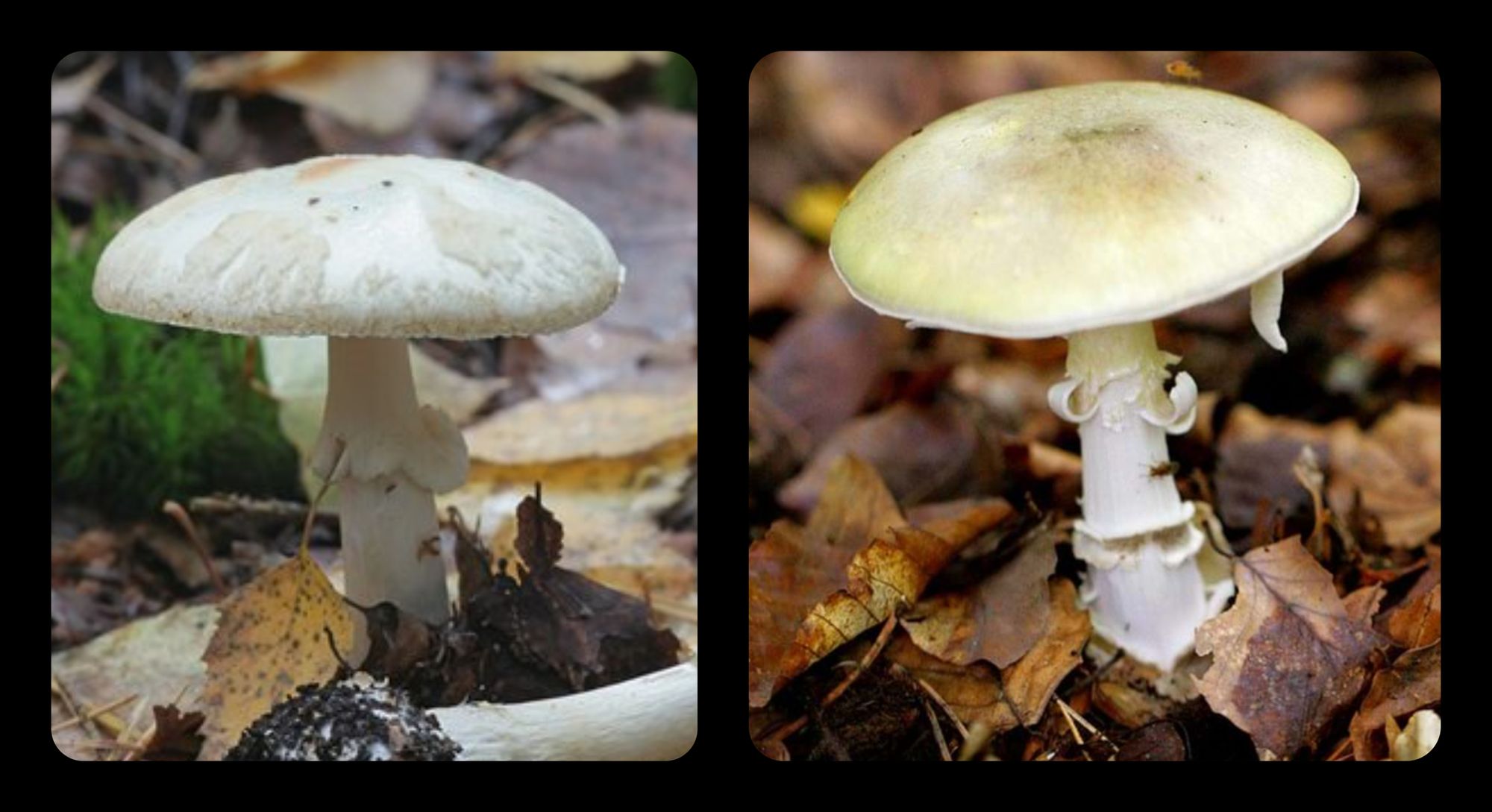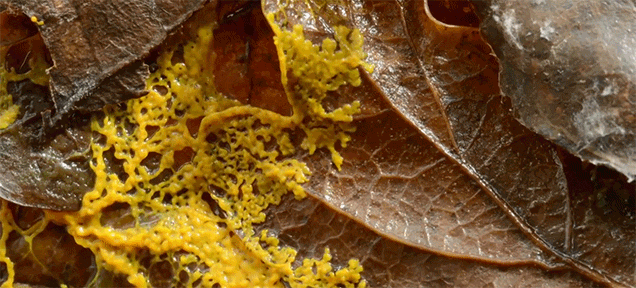Fungus are incredibly interesting organisms that inhabit a vital, and yet often overlooked, portion of our ecosystem. While perhaps not as exciting as some of the animals higher up on the food chain, I'm hoping I can convince you that fungus are equally interesting, in both behavior and principle.
This blog post aims to answer many questions you undoubtedly have, such as how can I safely forage mushrooms? Are fungi actually fun guys? Why don’t they get a real job? Are they in cahoots with the Big Tree industry? And what exactly do they think about all day?
How can I safely forage mushrooms?
There's an easy answer to this question. For example, take these two species:

One of those images is of the Amanita citrina. It's an edible species which has a meaty texture and tastes like chicken. The other is of the Amanita phalloides, which is better known by it's common name "Death Cap." As the name subtly suggests, it's incredbily toxic. Ingesting even small amounts can kill a grown human in just a few days. So...the answer to how to forage your own mushrooms is simply don't do that. I'm not qualified to give you accurate information, and you're not qualified to determine if the information you read is accurate.
Are fungi actually fun guys?
Let’s break this down into two parts. Are they fun? Yes. Are they guys? No.

Fungus are their own niche in biology. While they do have cell(s) containing a nucleus, they are decidedly not an animal nor a plant. Here are some of the more interesting things that differentiate them:
- Most fungi do not hunt for food, nor photosynthesize. Instead, they secrete digestive enzymes into their environment and then absorb the nutrients.
- Some species are unicellular, typically yeasts (which are a type of fungus). Slime molds are another example, with some samples being up to a centimetre thick, having a surface area of over a square meter, and weighing up to 20 kg!
- Almost all species can reproduce sexually, but often choose not to. When they do reproduce sexually, it’s via the nuclei from each parent fusing together.
An astute reader may have paused on that first bullet point. Did I say that "most" fungi don't hunt for food?! That's right! There are some species of fungi which have developed ways to actively hunt, and are therefore considered predatory species. Have fun dreaming about that tonight!
Why don’t they get a real job?
Most fungi are notoriously lazy, choosing to just hang out in the woods by themselves instead of pulling themselves up by their bootstraps and contributing to society. No wonder they're at the bottom of the food chain.

As mentioned previously, most fungi can’t even be bothered to reproduce normally. Despite these obvious and numerous shortcomings, fungi do play a vital role in our environment. Some interesting examples include:
- Mushrooms (and other types of fungi) have been used in the construction industry, to filter toxins from the air, and even help make a dent in the non-recyclable plastics contaminating and polluting our landfills.
- The process by which they release digestive enzymes to turn the environment into nutrient soup is beneficial to everybody, not just fungus. Other plants and animals consume these nutrients to grow big and strong.
- Fungi also form alliances with their favorite plants, and construct elaborate trade agreements to swap nutrients they want for nutrients that the plants want. I'll dive more into this in the next section.
- Aside from fungal friendships, there are members of the animal kingdom which have dedicated their lives and wellness to the pursuit of devouring mushrooms. In other words, they're a tasty and nurtient-rich food.
Are they in cahoots with the Big Tree industry?
Absolutely, and the scariest part is that nobody knows what they’re planning.
This ancient unionship has gone on far too long. If you’re not worried yet, here’s why you should be. Firstly, these conspiring organisms hoard and control resources around them. It’s well documented that fungi form symbiotic relationships with trees. The trees give them needed nutrients, and they supply the trees with the nutrients that they need, as well. If that mysterious alliance wasn't scary enough, they hold top-secret communications via vast and complicated underground networks. They use these “mycorrhizal networks” to transfer messages between plants, coordinating and influencing behaviors.

Perhaps most alarming is evidence which suggests they are playing with death itself. They do so by transferring nutrients to plants which are in danger. For instance, if there is a plant which is not in a nutrient-dense portion of soil, they will focus their nutrient delivery to that particular plant. Even more worrying is that they also conduct assassination attempts. There are documented occurances in which trees will use fungal networks to send toxic chemicals to neighboring and resource-competing trees. Hopefully I have convinced you of the harms that this secret alliance poses. Please contact your local legislator, and ask them what they're planning to do about the problem of mushroom assassins.
What do they think about all day?
Um...what? Yeah, you heard me!
Emerging research has started to suggest that mushrooms do indeed think, to some degree. While they certainly don’t meet the threshold for general intelligence, they exhibit some notably brainy behaviors.

Evidence for general memory.
Some German scientists decided to expose fungi to environmental stresses, and see how it affected their growth. What they found was that fungi remembered the stresses, and would alter their growth patterns as a result.
Evidence for learning and spatial recognition.
In this experiment, fungi were put in a box with some delicious beechwood available. So they did the typical “idk let's just spread out and hope we find something” behavior. But when shifted to a new box, the fungi would remember where the beechwood was in the last box and make a beeline towards it.
Evidence for intra- and inter- communications.
Fungi have electrical impulses which spike sporadically in a way similar to neurons, in response to environmental changes, and even cross between organisms to elicit responses in them. This behavior is cutting-edge emerging research, and thus we should extrapolate too much here. But fascinating, nonetheless!
Conclusion
This would normally be the part where I draw some type of abbreviated conclusion about the information presented in this article. But there's not really a conclusion, to be drawn. Mushrooms are weird? Yes. Fascinating? Yes. I've clearly spent more time than most people thinking about mushrooms thinking. And I figured that was interesting enough to warrant an article discussing that. Hope you enjoyed!
